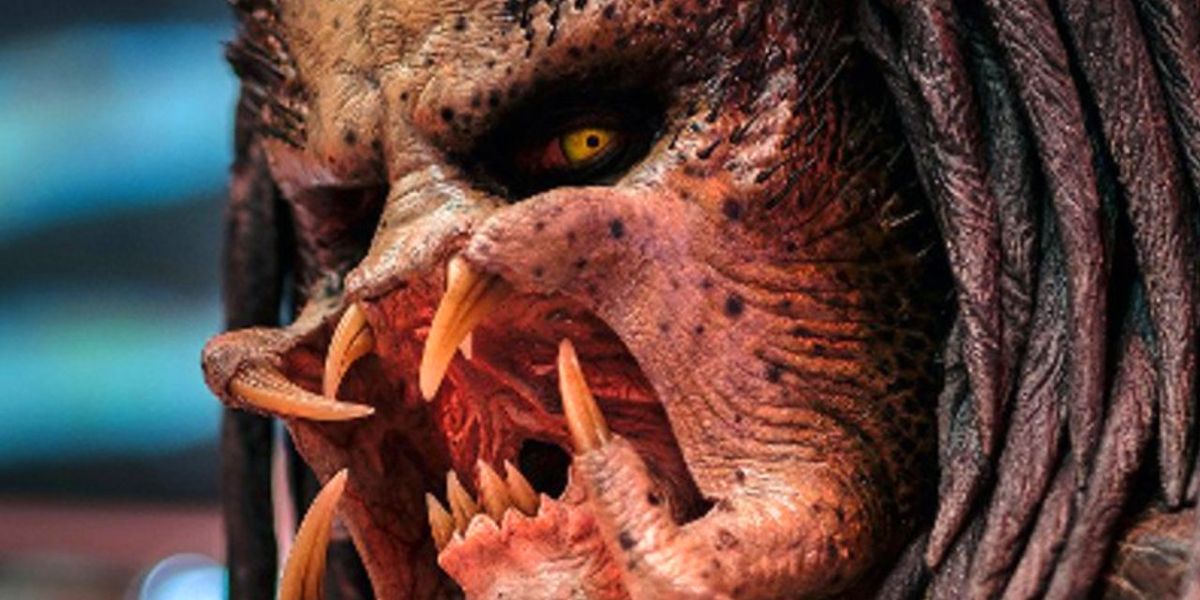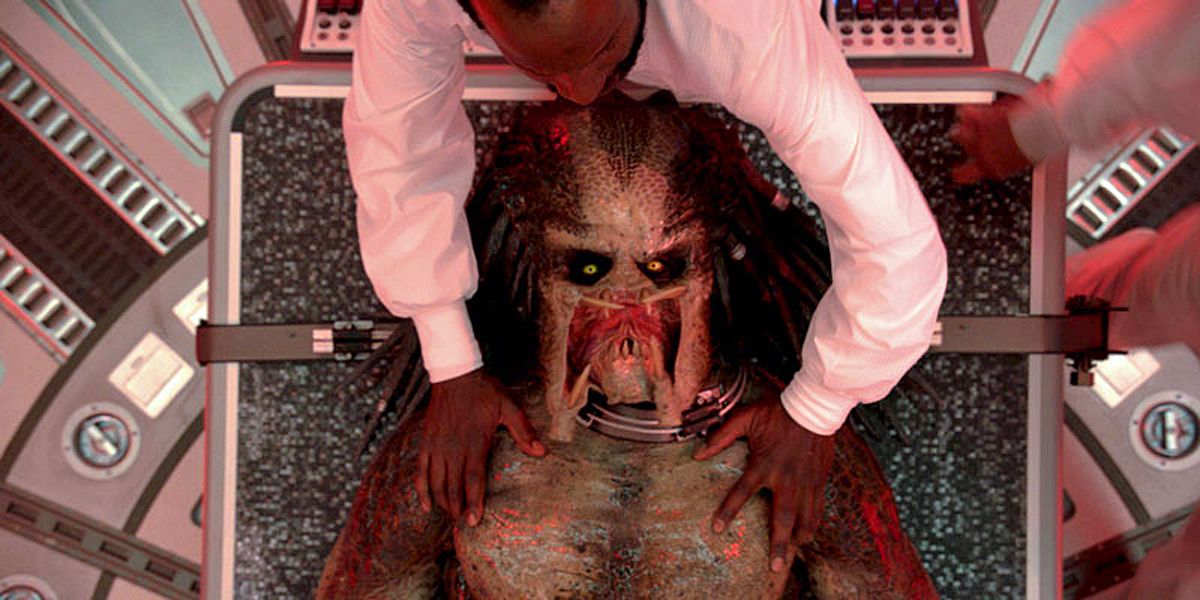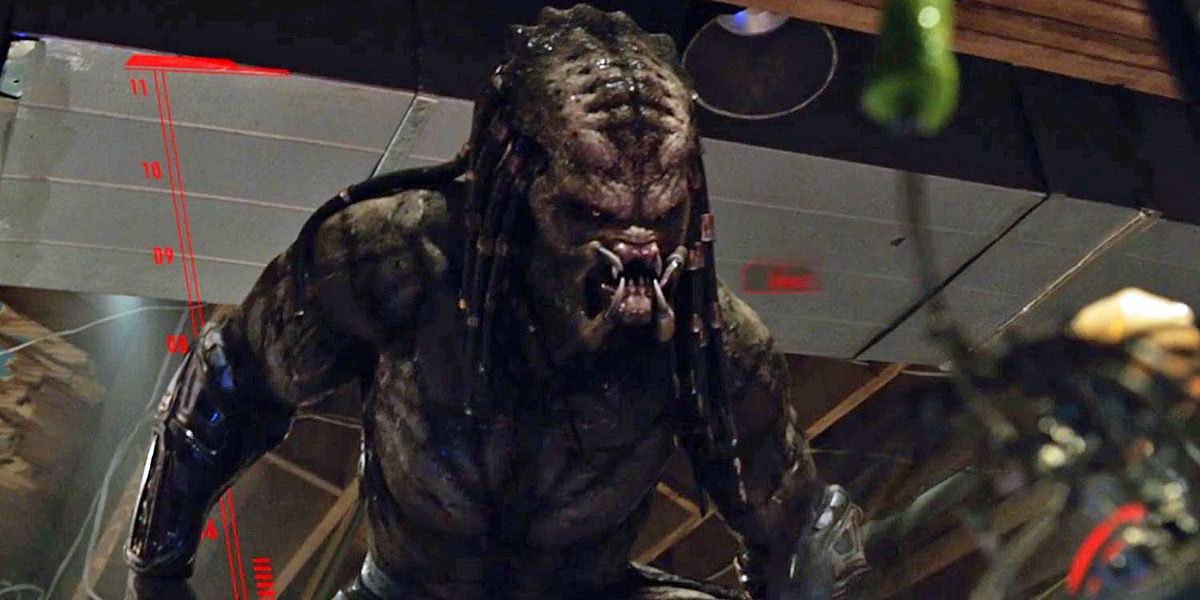WARNING: The following article contains spoilers for Shane Black’s The Predator, in theaters now.
As the fourth main entry in the long-running sci-fi action series, The Predator builds and changes the mythology more than any other film to date. While acknowledging the franchise's origins with a motley crew of military misfits stalked in the wilderness by an extraterrestrial hunter, director Shane Black's sequel also alters existing elements to evolve the series for modern audiences.
That added motivation is present both on screen and behind the camera, with perhaps the biggest change to the mythos being a new rationale for the Predators interstellar hunts: genetic material. While the human characters note that interplanetary hunting is primarily used for recreation, there are factions of the species that obtain DNA from their quarry to upgrade themselves through gene splicing.
RELATED: Does The Predator Have a Post-Credits Scene?
While this certainly leads to the creation of the film's main antagonist, the hulking ultimate Predator, it's revealed even before the new threat's arrival that the smaller, more traditionally designed Predators also contain the genetic material of other species, including humans. It's then revealed the signature act of Predators ripping out their skulls of their prey by the spine is more than a brutal method to obtain a new trophy; it's how they're able to recover the genetic material from their victims' spinal fluid.
While Predators have been visiting Earth since at least the 18th century, as evidenced by the flintlock pistol seen at the end of 1990's Predator 2, the film notes that the interstellar visits have become more frequent with the escalating threat of climate change. While the Predators certainly retain their hunter sensibilities, the notion of them attempting to collect as much genetic material as possible before the eventual extinction of humanity effectively makes the aliens harvesters.
RELATED: Every Predator Movie Ranked, According to Critics
The increased visits leads to another addition to the franchise's mythos: In the face of the heightened Predator activity on Earth, the U.S. government creates a top-secret organization to monitor and study the aliens, directly referencing the events of the 1987 original as well as Predator 2. While taking heavy losses over the course of the new film, the organization survives and is shown in the final scene experimenting with new alien technology, including a form-fitting, advanced war suit dubbed by the staff as a "Predator Killer."
Page 2: [valnet-url-page page=2 paginated=0 text='The%20Predators%20Are%20Finally%20Called%20Predators']
The government agency is also responsible, in-universe, for the hunters being called "predators." While the alien creatures, known on their home world as Yautja, have been referred to colloquially as Predators since the launch of the franchise, they have never been referred to on screen as such until this latest film. When Olivia Munn's character, Casey Brackett, observes that the extraterrestrial is more of a recreational hunter than predatory creature hunting to survive, Sterling K. Brown's Will Traeger admits the staff of the top-secret government facility took a poll and decided to call the aliens Predators, simply because it sounded the coolest.
As the captive Predator makes its inevitable escape from the unnamed government organization, the characters learn there is internal conflict within the alien society, with smaller, classic Predators trying to give humans the Predator Killer so they may defend themselves against future attacks. While the concept of rival factions was introduced in 2010's Predators, the new film suggests there is a clan within the alien civilization that's more sympathetic to humanity's fight for survival, which places them in direct conflict with others.
RELATED: How The Predator Sets Up a Sequel
Another change in the film to Yautja society is the heavily redesigned Predator hounds. First seen in Predators, the quadrupedal creatures serve as hunting companions for their humanoid counterparts. Unlike the earlier film, however, the latest entry removes the spikes from the previous design and has the hell-hounds more closely resemble their extraterrestrial masters. And although the latest release does provide the first on-screen appearance of female Predators, the difference between genders is not readily apparent nor discussed in the film itself.
RELATED: The Predator's Ending, Explained
Expanding and altering the mythos while embracing the unapologetic, nostalgic charm that made the original film a hit with audiences in 1987, The Predator seeks to take sci-fi franchise into bold, new directions while providing the most extensive look at the eponymous hunter society on screen to date. If the series does continue with the filmmakers' plans for a new trilogy, they have plenty of new material to explore thanks to this installment.
Directed by Shane Black from a script he wrote with Fred Dekker, The Predator stars Boyd Holbrook, Trevante Rhodes, Jacob Tremblay, Keegan-Michael Key, Olivia Munn, Sterling K. Brown, Alfie Allen, Thomas Jane, Augusto Aguilera, Jake Busey, and Yvonne Strahovski. The film is out in theaters everywhere now.



